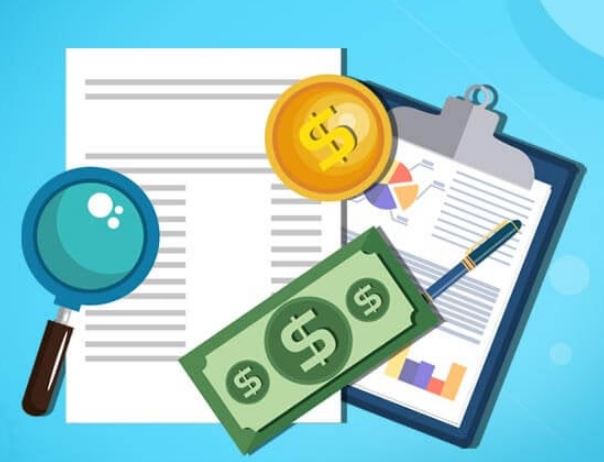In the context of assessing the financial condition of a company, the balance sheet is generally a place where an analyst, an investor, and a stakeholder begin the search for information. It provides a picture of the company’s assets (assets), liabilities (liabilities), and the owner’s interest (equity) at a specific time. However, not all financial information is represented on the balance sheet. A few accounts are deliberately left out most often because of accounting standards or the nature of transactions involved.
Such accounts are referred to as off-balance sheet (OBS) items. Although these things are not printed on the balance sheet, they might reveal a company’s financial situation. Being aware of these accounts is essential to understanding the entire picture.
What Are Off-Balance Sheet Items?

Off-balance sheet items represent assets or liabilities of an enterprise that are not reported on its main balance sheet since they fall outside the scope of recognition criteria provided by accounting frameworks such as GAAP or IFRS. Still, those are the footprints of the company and are revealed in the notes of the financial statements.
They typically relate to:
- Contingent obligations
- Future commitments
- Financial instruments or lease agreements
Why Are Some Accounts Left Off the Balance Sheet?
Companies may not show certain accounts on the balance sheet due to several reasons including:
- Accounting rules: Only those assets or liabilities that meet the recognition criteria can be accounted for.
- Financial strategy: Off-balance-sheet items can create a better picture of financial ratios.
- Legal structuring: By using third parties, a company can transfer obligations beyond direct reporting.
Common Off-Balance Sheet Items
1. Operating Leases
Before the introduction of the new accounting standards (such as ASC 842), a lot of companies that were not very ethical utilized the loophole of operating leases to hide the leasing obligations that were of the long term from the liabilities. With operating leases, the business simply takes the use of an asset, like office space or equipment, but does not have the ownership of it.
Even though the company pays regularly, such payments were not considered as liabilities under the old standards. These obligations, therefore, remained off the balance sheet and thus, made the company look less leveraged.
2. Accounts Receivable Factoring
It is quite common for businesses to attempt to improve their cash flow by selling future income to third parties (factors), to get cash right away. After the sale, these receivables do not appear on the balance sheet as the company’s assets.
By doing so, a company shifting its risk to the other party will enjoy the quick cash injection that comes with it. Since the company gives up control to the third party over these receivables, this is the reason that such items are considered off-balance sheet.
3. Leaseback Agreements
Such an option is the case where a company sells an asset (such as a property or equipment) and then rents it from the new owner so that the company can continue to use the asset.
It is highly likely that the transaction will be unobservable or only partially visible on the balance sheet, especially if it is designed in a way not to reveal the new lease as a liability. The original owner may still carry the asset, hence the issue of a grey area in the financial reporting.
Other Key Accounts That Don’t Appear on the Balance Sheet
Dividends
If a company has only declared a dividend payable, then the balance sheet reflects the dividend. Before the declaration, dividends are not considered as liabilities. Dividends paid are a deduction from retained earnings, which is reflected in the equity section, but the dividends themselves are usually recorded in another place—often in the statement of changes in equity.
Research and Development (R&D) Expenses
R&D is the lifeblood of innovation, however, it will only be treated as an asset if the capitalization criteria are highly met, and otherwise it will be recorded as a cost in the income statement. This means that these activities are not considered assets on the balance sheet, even if they may later lead to new inventions or product development that would generate revenue.
Contingent Assets and Liabilities
Contingent assets and liabilities are those that are dependent on uncertain future events—like the result of a lawsuit. If the event is likely and measurable, the liability may be disclosed. However, usually, they are not on the balance sheet, and they are only mentioned in the notes.
In case the contingent liabilities might become the real ones, and the assets could be the source of gains, but until they are confirmed, they cannot be included.
Advantages of Off-Balance Sheet Accounting
- Better Financial Ratios: By omitting the liabilities from the records, the key indicators such as the debt-to-equity ratio and the return on assets can be improved.
- Enhanced Credit Position: Thus, companies may appear less risky to lenders and investors.
Potential Drawbacks
While off-balance sheet accounting may give room for more ease, it can lead to a misunderstanding if it is not disclosed. The misuse of these methods led to big financial scandals – Enron is such a case. That is why regulators now call for more disclosure, especially in the notes to financial statements.
Investors have no choice but to look deeper—going through the details, examining the partners they trust, checking agreement terms, and the like in order to have a complete picture of the financial situation.
Looking Beyond the Balance Sheet
The balance sheet is a great financial instrument—but it does not cover everything. By learning what accounts are not on the balance sheet, investors and stakeholders can have a more comprehensive picture of a company’s financial condition.
Major items such as operating leases, factoring accounts receivable, and contingent liabilities are not so obvious at first glance, still, their influence is a fact. Reading disclosures and footnotes is the best way to discover off-balance sheet hazards and unforeseen possibilities.









